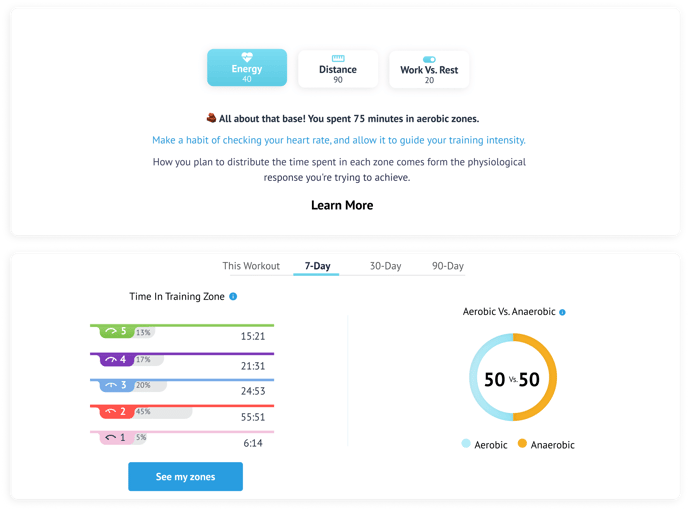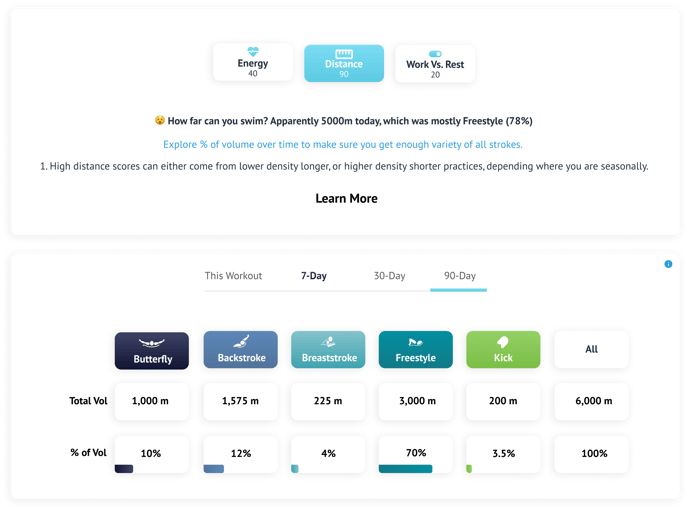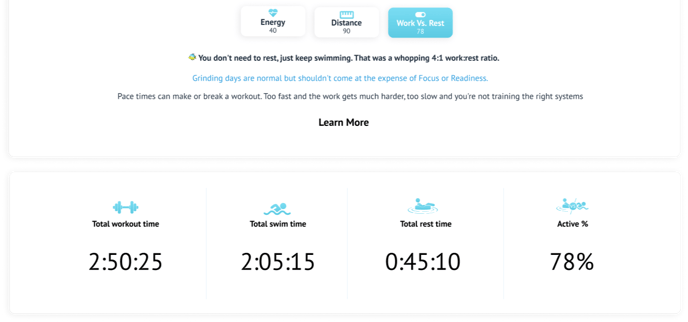Intensity Score
Intensity is how TritonWear computes how hard an athlete works during a workout.
Intensity Score answers the question: How intense was this session or how hard was training today? To do this energy systems usage, distance swam, and work vs rest are combined.


These three elements measure different elements of training:
Energy
Energy system usage refers to how much time is spent in each training zone. As swimming speed, distance, or the amount of rest changes it impacts how intense a workout becomes. Each practice is planned to intentionally engage different energy systems to build an athlete's cardiovascular health and ability to produce, tolerate, and clear lactate. TritonWear tracks training zones based on automated Critical Swim Speed. The energy score helps athletes and coaches understand if the right energy systems have been engaged during a single workout, and over the past 7, 30, or 90 days.

Distance
Another key component in athlete development is targeting the right muscle groups often enough to produce a well-rounded physique. This is important both for highly specialized swimmers as well as athletes still in the early years of training. Training all muscle groups builds power reserves athletes can pull from when it matters most both in training and in races.
Distance tracks both the number of meters or yards swam and the % of training by stroke type both in a single workout as well as over the past 7, 30, or 90 days. Freestyle will always be the highest both in distance and % of total distance during the time period in view, as it is more often used during warm-up, cool-down, and easy reps between hard swimming.

Work vs Rest
The final component of an Intensity Score is also the most variable and difficult to track. The amount of rest an athlete gets during training directly translates to the energy system engaged and the overall intensity of the workout.
If an athlete is having an off day, they might miss pace times, which decreases the rest intended for the practice and effectively increases the overall intensity. Conversely, if a swimmer is feeling great they may swim faster than intended which increases the amount of rest and brings down the overall workout intensity.
Keeping track of the amount of rest helps both athletes and coaches understand what is impacting energy system adaptations.

How will this help you improve?
By having a simple score that can be used as feedback to track the intensity of training, you can adjust your training schedule to make sure you are training the right energy systems as planned. It’s not just about pushing your body to the brink of exhaustion - it’s about using the Intensity score to strike a balance and ensure you do the right work for the purpose of the workout. Intensity Score takes the heaving lifting out of test sets and lactate testing.
